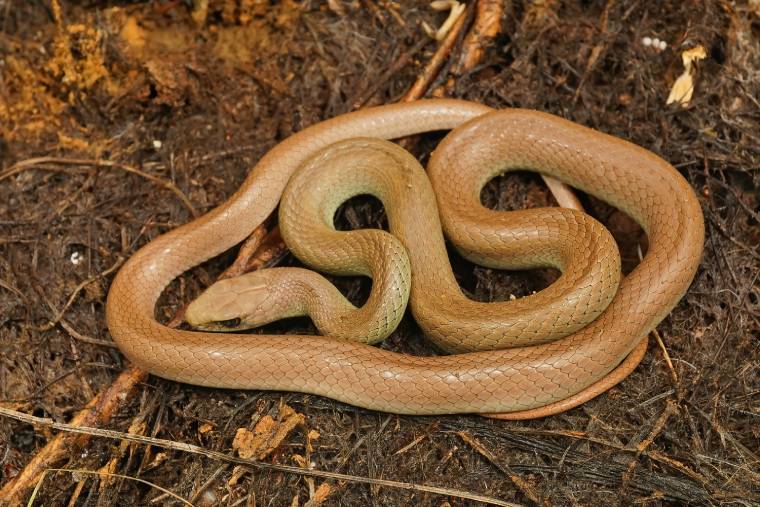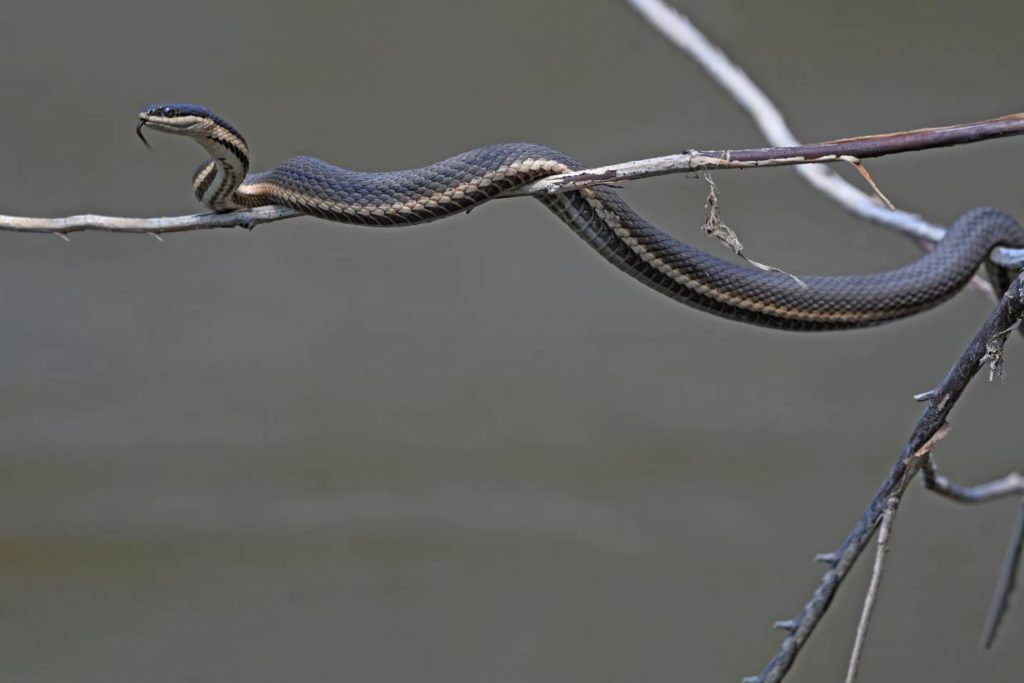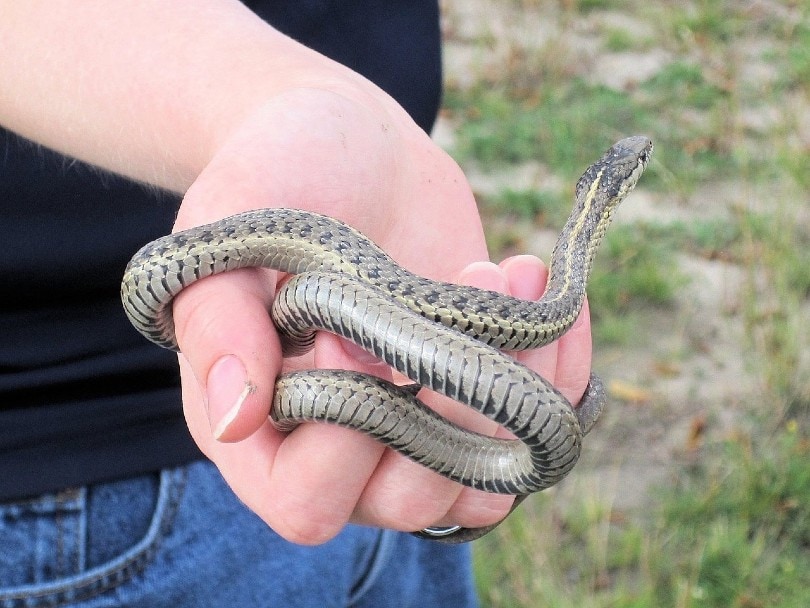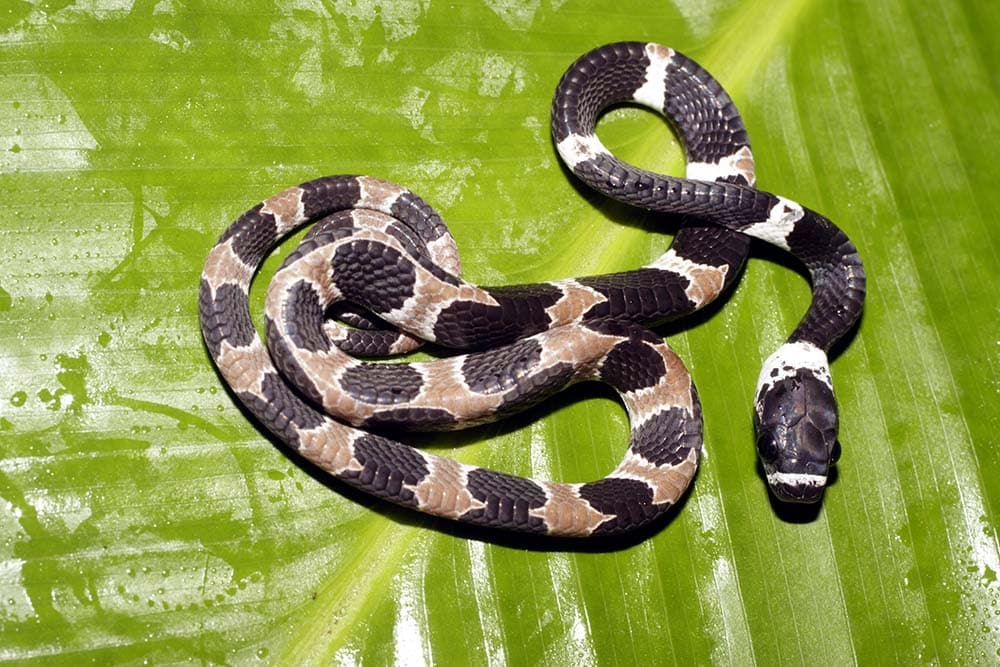
With more than 3,000 species of snake in the world, and examples being found everywhere except in a handful of areas, the reptile can be found just about anywhere. What’s more, 600 of those species are considered clinically venomous, which means that the venom of that species has a clinical effect on people and can cause harm.
Most snakes blend in to the background, some burrow in small holes, and others take residence in crawlspaces and outdoor buildings of property, so it is little wonder that people have been fascinated by these animals throughout history.
While we know a lot about this type of reptile, there are still many myths abound regarding snakes. Below, we dispel 10 of the most common misconceptions.

Top 10 Myths & Misconceptions About Snakes
Snakes Are Aggressive
In some ways, this particular myth may have aided people rather than harmed them, because it would have encouraged them to stay away from potentially deadly snakes and would have encouraged people that saw a snake to be more cautious around them.
Unfortunately, it probably also led to many people killing snakes as a means of controlling the threat of angry, marauding snakes. Most snakes, when confronted with the sight of a significantly larger animal like a human, will slither away to safety. Some may lay still and pretend to be dead, but only very few snakes will show any signs of aggression, and even then only when they feel there is no better choice.
If you see a snake, give it room, and stay out of the way, but there is no reason to believe it is going to chase you or attack for no reason.

Snakes Are Deaf
This myth was first reported by scientists, although it has long been disproven. Because snakes do not have ears or eardrums, and because they do not always react to loud noises, it was believed that snakes were deaf.
While it is true that they don’t hear sounds in the same way we do, but they can feel vibrations in the air and through the ground. Whereas humans have tiny bones in the ear that pick up sound, snakes have similar bones on the sides of their heads. These bones enable the snakes to pick up noises and recognize them.
Snakes hear very differently from humans, but they can and do pick up sounds, so they are not deaf.
If You See A Baby, Its Mother Is Nearby
This is a very odd misconception when you consider the reality. Although some people will relay stories stating that seeing a baby snake means that the mother snake is somewhere near, this is very unlikely.
Baby snakes are born with the capability to fend for themselves completely, and after an initial week or so of not having to eat, they will venture out on their own to hunt. In fact, snakes do not show maternal or paternal instincts, at least in a way that would see them heading out foraging together or parent teaching child to hunt.
If you see a baby snake, it is likely to be on its own because it will not be courting, either.

Babies Are More Dangerous Than Adults
If you do see a baby snake, there is no more or less reason to worry about its venom than with an adult snake. This is despite rumors that because they have not yet learned to effectively control the venom they administer, baby snakes are more dangerous than the apparently reserved adult snakes.
By the time a baby goes on its first hunt, it is fully equipped and skilled, meaning that it has total control over its venom delivery.
There may be some differences in venom levels between snakes, and even between snakes of the same species, because of diet, but the size of the baby snake means that it is likely to have less venom to deliver than an adult snake, although you shouldn’t assume that this means a small snake cannot still deliver a very venomous punch.
Snakebites Should Be Sucked Out
This old myth was prevalent in Western movies and was perpetuated for many years. Fortunately, most people are aware that it isn’t true. Snakebites should not be cut or sucked out to help prevent their spread.
Venom spreads very quickly and attempting to cut or suck the bite out can actually make matters worse. The venom is essentially drawn to one area and this heightened concentration of venom will be able to do more damage to that one area. The only solution to a venomous snakebite is anti-venom, where required, or letting the venom run its course if it will not prove fatal and cannot be treated with any drugs.

Triangular Headed Snakes Are Venomous
Considering the devastating effects the venom of some snakes can have, it is hardly surprising that there are many myths about identifying venomous snakes.
One that seems quite common is that venomous snakes can be identified by the shape of their head. Those with triangular heads are supposedly venomous, while those with heads of other shapes are not. This isn’t true and you should never rely on this kind of technique to try and identify a venomous snake.
Other similar misconceptions exist regarding the shape of the snake’s pupils. Again, the myth is inaccurate and untrue and should be ignored.
Snakes Have No Bones
Snakes are vertebrates, which means that they have a vertebrate or backbone. They also have a skull, jawbone, and they actually have ten times as many ribs as humans do, with one attached to each vertebrate.
As such, while you may have heard that snakes have no bones, this is far from the truth. Snakes have hundreds of bones.
This misconception is likely to have started because of the movement of the snake and the fact that it looks almost fluid. However, this can be explained by the fact that snake bones are so much smaller than ours and while they have a lot of bones they are laid out in such a fashion that enables them to move.

Snakes Are Slimy
One of the reasons that many people are put off even holding a snake in the first place is because they believe them to be slimy and disgusting.
In fact, the skin is completely dry and it may be rough or smooth. Because they do not have sweat glands, snakes do not even produce sweat, and many of them live in arid conditions so rarely come into contact with water. Even water snakes dry off quickly as a means of survival. Some amphibians secrete slimy mucus, but not snakes.
Milk Attracts Snakes
Some people believe that putting a saucer of milk outside will attract snakes. People might do this in the hope that the snake will get rid of mice or rats but the misconception that milk attracts snakes comes from the days of seeing snakes heading towards cow barns and dairy farms.
Farmers believed they were suckling milk from the cows when they were going hunting for rodents that live around seeds and livestock feed. Snakes are not designed for suckling, and cows are unlikely to put up with being suckled by a snake.

Snakes Travel In Pairs And Avenge Their Partner’s Death
As we mentioned above, snakes do not travel in familial groups, not even with their parents. The only other time that you are likely to see two snakes together is when they are courting or preparing to mate.
In either case, snakes do not recognize people and do not feel familial ties or form close bonds with a mate, which means you will not see them together and that the surviving mate of a snake that you have killed will not be able to recognize you or feel the need to take any kind of revenge.

Misconceptions About Snakes
There are thousands of distinctly different species of snakes and they are found all around the world. Estimates suggest that more than a million people own them as pets, but their secrecy and their ability to hide away in remote spots means that snakes are still shrouded in a veil of mystery.
While we should always take care when dealing with snakes, and be prepared to take evasive or corrective action around venomous species, we hope to have dispelled some of the most common and potentially damaging myths and misconceptions around these incredible animals.

.jpg)
No comments:
Post a Comment